Like a few millionaires of Italians, I am "taking advantage" of this period of forced but inevitable quarantine to test some dough recipes and cooking procedures with a view to improving my versions of some
Sicilian leavened products .
A premise is a must: everything that is traditional suffers the limit of being more or less codified and any attempt to introduce an ingredient or to dare an exogenous procedure is mostly attacked and rejected by radical traditionalists. Could this happen for fear of discovering that we can obtain a better version, in our specific case, of
focaccia which questions the grandmother's ancient and sacred culinary knowledge? To avoid misunderstandings, this does not mean that grandmothers cook badly, on the contrary ... But that often a little courage is needed, of acceptance that some reassuring culinary certainties can wobble ... Are you willing to take risks? Very well…
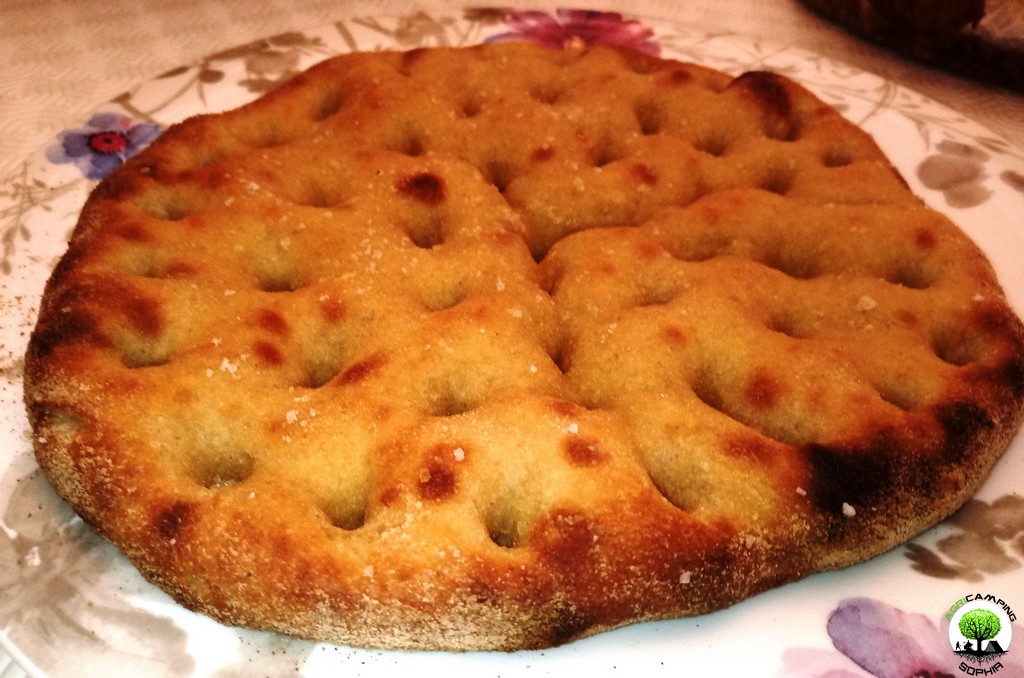
If you search online for the
Messina focaccia recipe, for example, you will mostly find
direct doughs with abundant abuse of lard which would give more "crunchiness" than extra virgin olive oil olive. As a good "scientist" I have tested this theory more than once in the field. First of all, what is lard? Basically, lard and pork fat, concentrated (for the rest there is Wikipedia ...) When did I use it? When some recipes included it (for example fried gnocco or Messina hard pidoni) and when for some reason (there are many ...) my dough did not rise well or I was in a hurry to use it. In other words, your dough has come to suck. Solution? Lard. More than giving "crunchiness",
lard also gives softness to a shoe sole .
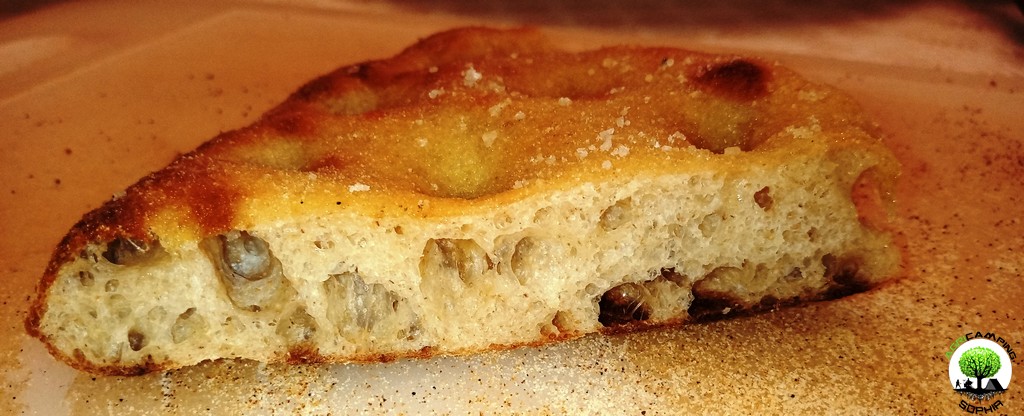
Clearly mine is just one opinion among many. I ask if I am not very diplomatic. However this is my experience in this regard.
How to make a good focaccia dough without tons of lard? With a lot of patience. If you are not patient, put a "Soft Pizza Margherita Findus" (I'm not inventing it: it's called that!) In the oven and in a quarter of an hour you will have filled your belly (but I have doubts about the relatively short times of digestion).
There are two types of dough: direct and indirect. In short,
direct doughs consist of directly combining almost all the ingredients at once.
Indirect doughs consist of letting only a certain percentage of ingredients rise for 16 hours, then adding the remaining ingredients: in this case we talk about
poolish (100% hydration) and
biga (50% hydration). I avoid going into too much detail that I will take care to deepen on another occasion. Ah! Maybe I have to specify it: hydration is the amount of water compared to flour.
 I then compared three different types of procedure
I then compared three different types of procedure , for the same amount of time spent, with the same ingredients, to determine whether it was really worth choosing one type over another:
direct, with biga , with poolish . All the doughs have in common 300 grams of 00 flour and 200 grams of wholemeal Russello and Tumminia (both Sicilian semolina): this for now passes the convent. I suppose it is medium-low strength flours (an indicator of strength, i.e. tenacity, extensibility and absorption capacity of liquids, it can be the amount of protein per 100 grams, however it is an empirical laboratory test for which is either indicated on the packaging or you can ... just just deduce)
All the doughs have 30 grams of extra virgin olive oil, 20 grams of sugar, 15 of salt, 67% of total hydration and 100 grams of mother yeast. For the nerdiest: I didn't have pure autolysis (water and flour) directly, but I just added salt and 50% oil after 16 hours.
After 24 hours and a couple of regenerations / folds (out of a 67% I don't know how to technically consider them) without altering their composition (therefore always in the bowl and without the aid of additional flour) I obtained a stick of about 200 grams from each type of dough, proceeding to what is technically defined
proof , that is to give the final shape that the focaccia will have a couple of hours from cooking, a sort of "second leavening" so that the glutinic mesh is "Relax" in the final form. From the direct I took a second loaf that I would have "ironed" (strictly by hand since the rolling pin must be used only for shortcrust pastry ...) at the moment, to also test the validity of the
proof . Poolish and biga accounted for 30% of the final dough. It goes without saying that all the pre-baked buns were of the same thickness (just under one centimeter).
I cooked everything on
refractory stone , with a home oven, as they say in jargon, "ball" (on paper 250 degrees Celsius), in "pizza" mode (static in the lower heating element, grill in the upper one, ventilated in the rear one), strictly for three and a half minutes (so as not to distort the comparison).
These are the empirical results:
- proof is not only form but also substance, giving the focaccia a better taste, more fragrance and better cooking
- the direct dough without proof was less cooked, with a cornice just mentioned, at the bite more similar to the softness of a Neapolitan pizza but overall, albeit sufficient, the worst test among the four
- the direct dough with proof was more uniform in terms of shape, baking and overall better than the same dough without proof
- indirect doughs are both superior to direct dough, for uniformity and "effectiveness" of cooking, flavor and fragrance
- the mix with poolish was found to be more delicate, with a more intriguing, regular and beautiful honeycomb, however tending to be less suitable for the biga for bread-making
- the dough with the biga is the one that initially convinced the most for the expectation compared to the idea of ??focaccia that we had in mind, more "panoso" than the poolish, therefore to be chosen in consideration of this particularity >
N.B. It is clear that this comparison has no absolute value but is related to the (scarce) ingredients, the type of oven, the rising temperature (about 20 degrees Celsius) and all the environmental factors that you want to take into consideration.
I thank Marta, Corrado, Filippo, Sefora, Giampiero and Lorena for their precious technical-scientific advice.
 DO YOU WANT TO ORGANIZE AN ERASMUS AT AGRICAMPING SOPHIA?
DO YOU WANT TO ORGANIZE AN ERASMUS AT AGRICAMPING SOPHIA?
WHAT IS AGRICAMPING SOPHIA?
It is a campsite with tent pitches, glamping tents, mobile homes and bungalows
WHERE IS IT?
In Italy, in Sicily, near Syracuse, in Pachino: 36.736883, 15.095610
HOW TO CONTACT US?
info@agricampingsophia.it
(SPEAK ENGLISH) +39 3473079242 – (ONLY SPEAK ITALIAN) +39 3452396095
WHAT DO WE OFFER?
We offer hospitality and catering for Erasmus projects
FOR HOW MANY PEOPLE?
We can have 4-7 single beds in the Socrate Bungalow, 6-10 single beds in the Platone Mobile Homes, 4-6 single beds in the Aristotele Mobile Homes, 4 single beds in the Iblone Mobile Homes, 4 single beds in the single beds in the Empedocle Glamping Tents. In total we therefore have 18 comfortable single places or 31 single places with a fair spirit of adaptation.
IN WHICH PERIOD CAN AGRICAMPING SOPHIA BE AVAILABLE?
The most suitable periods to use our services...
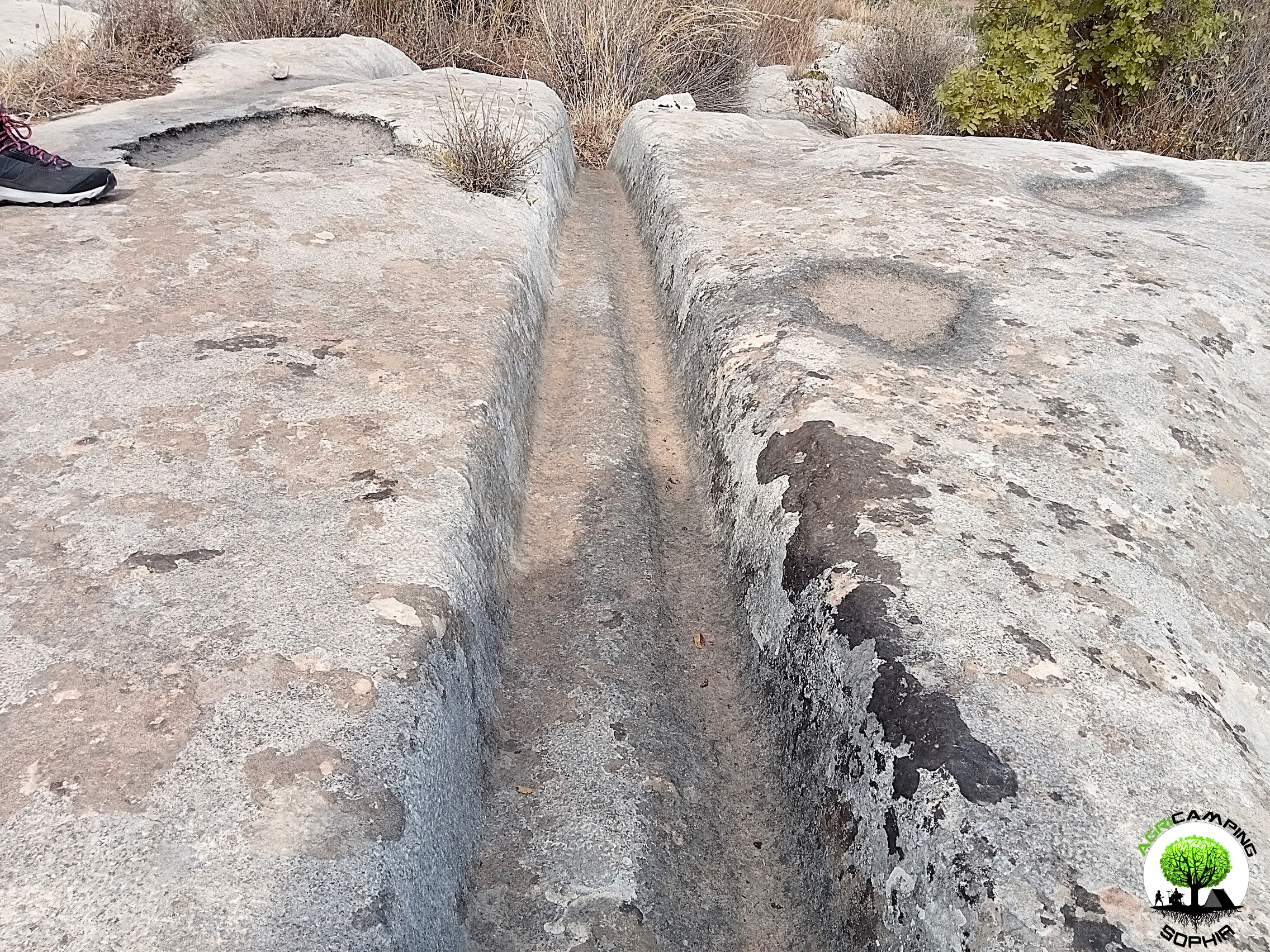 CART RUTS MODELED ON SOFT ROCK?
CART RUTS MODELED ON SOFT ROCK?
Read also RACK OR HOUSING FOR CLOGS?
Some cart ruts from the Targia district, in Syracuse, and most of the cart ruts from Granatari Vecchi, in Rosolini, give the impression of having been impressed, modelled, on a rock that was originally viscous, not entirely solid. As absurd as this hypothesis may seem, especially in Granatari Vecchi, the softness of the shapes and the at least anomalous uniformity of the rock bank, as if it were a concrete casting, which hosts the cart ruts, is unicum compared to the lithic context in the area.
In Targia this phenomenon is less impressive but if we consider the cart ruts essentially cart tracks, therefore furrowed roads indirectly resulting from the repeated passage of carts along the same route, we do not understand why such uniformity and smoothness is present, in the majority of cases, also on the parts not affected by the passage of the...
 RACK OR HOUSING FOR CLOGS?
RACK OR HOUSING FOR CLOGS?
Read also CART RUTS CUT FROM QUARRIES
In the presence of slopes, even slight ones, in some cart ruts in the Targia district, in Syracuse, central holes are found with a diameter of between 30 and 50 centimeters and a depth of 15-20 centimeters, spaced about 50 centimeters apart. Neither the position (they are not exactly in the center of the cart ruts and perfectly aligned with each other), nor the shape appear perfectly regular: either the passage of time and any wear have profoundly modified their original shape or, simply, they have never had a systematic regularity. However, the offset in position between one hole and another is never completely “off-axis”: there is always a portion about twenty centimeters wide that coincides with the same portion of the previous and subsequent hole. The best preserved and most defined holes are found in the cart ruts usually called Scala...
 CART RUTS CUT FROM QUARRIES
CART RUTS CUT FROM QUARRIES
Back to CART RUTS AND A FEW TOO MANY PROJECTIONS
I will skip any preamble, referring to what has already been written regarding the presence of cart ruts in south-eastern Sicily.
The easy academic tendency has been, in most cases concerning cart ruts, to consider them in terms of the latomie, or quarries, with which very often (for example in the cases of the Targia or Pizzuta districts) they share the same territory.
According to this theory, the carraie would have been indirectly created due to the wear of the rock at each passage of carts or sleds loaded with extracted stone blocks. I will not repeat the arguments presented so far in order to demonstrate that this is a theory that has little solid foundations on an in-depth analysis of the cart ruts. However, I will add a piece by demonstrating the implausibility of a connection between them in both chronological and functional...
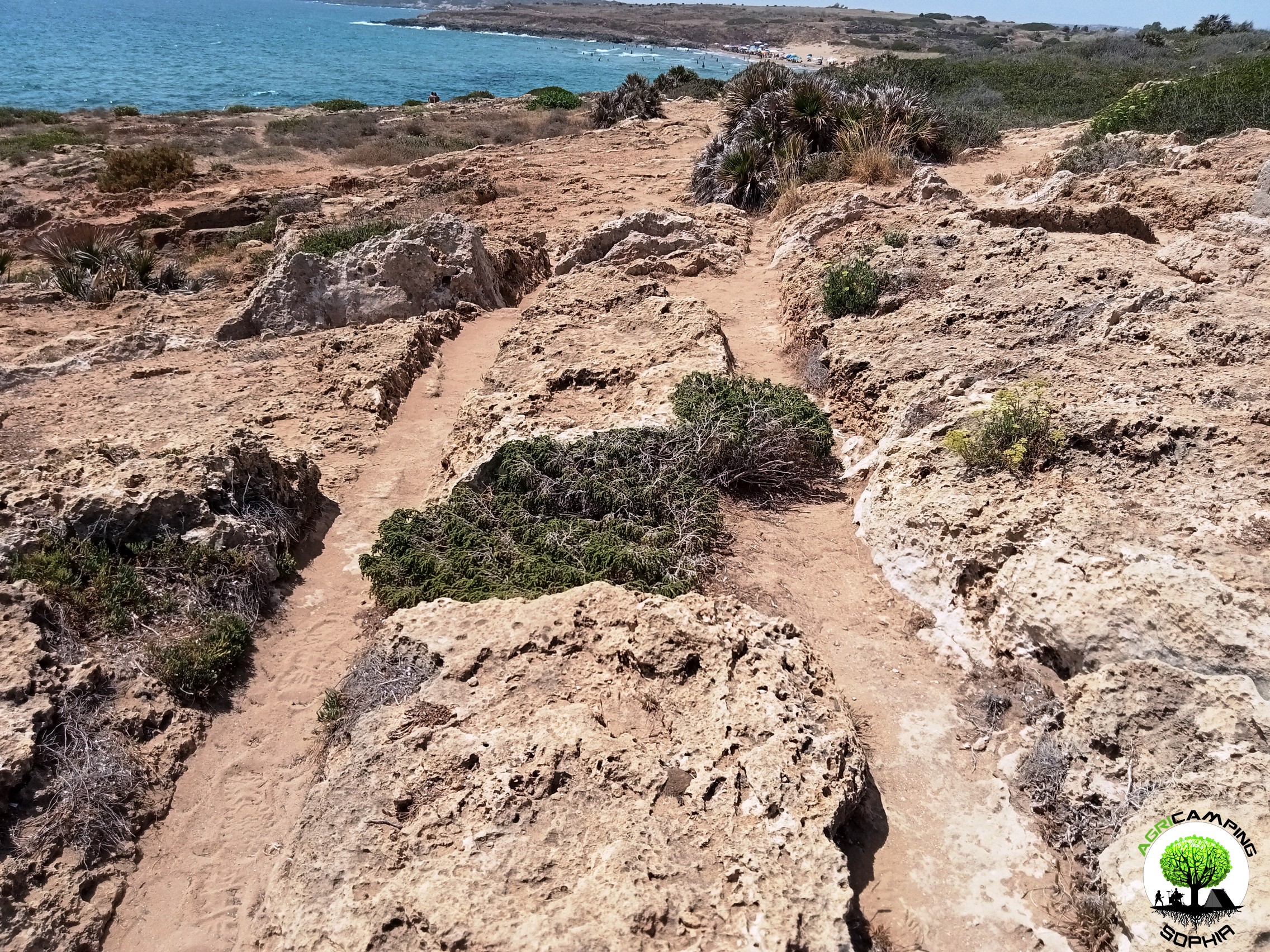 CART RUTS AND A FEW TOO MANY PROJECTIONS
CART RUTS AND A FEW TOO MANY PROJECTIONS
Read also THE POLISHING OF THE CART RUTS
I will skip any preamble, referring to to what has already been written regarding the presence of cart ruts in south-eastern Sicily.Considering the possibility that the cart ruts were gradually dug by the passage of carts pulled by pack animals, for example pairs of oxen, observing certain sections of the cart ruts present in the Granatari Vecchi district, in Rosolini, and in the Pizzuta district, close to the Vendicari Reserve, two questions arise:
1. Why force the animals to pass over rough surfaces and protrusions high, compared to the base of the furrows, even 60-70 centimeters?
2. Why, in the presence of such obstacles, not opt for a detour?
For Mottershead, Pearson and Schaefer such protrusions appeared later, since at the time of the passage of the wagons, a layer of earth covered the rocky bank, thus not making the obstacle...
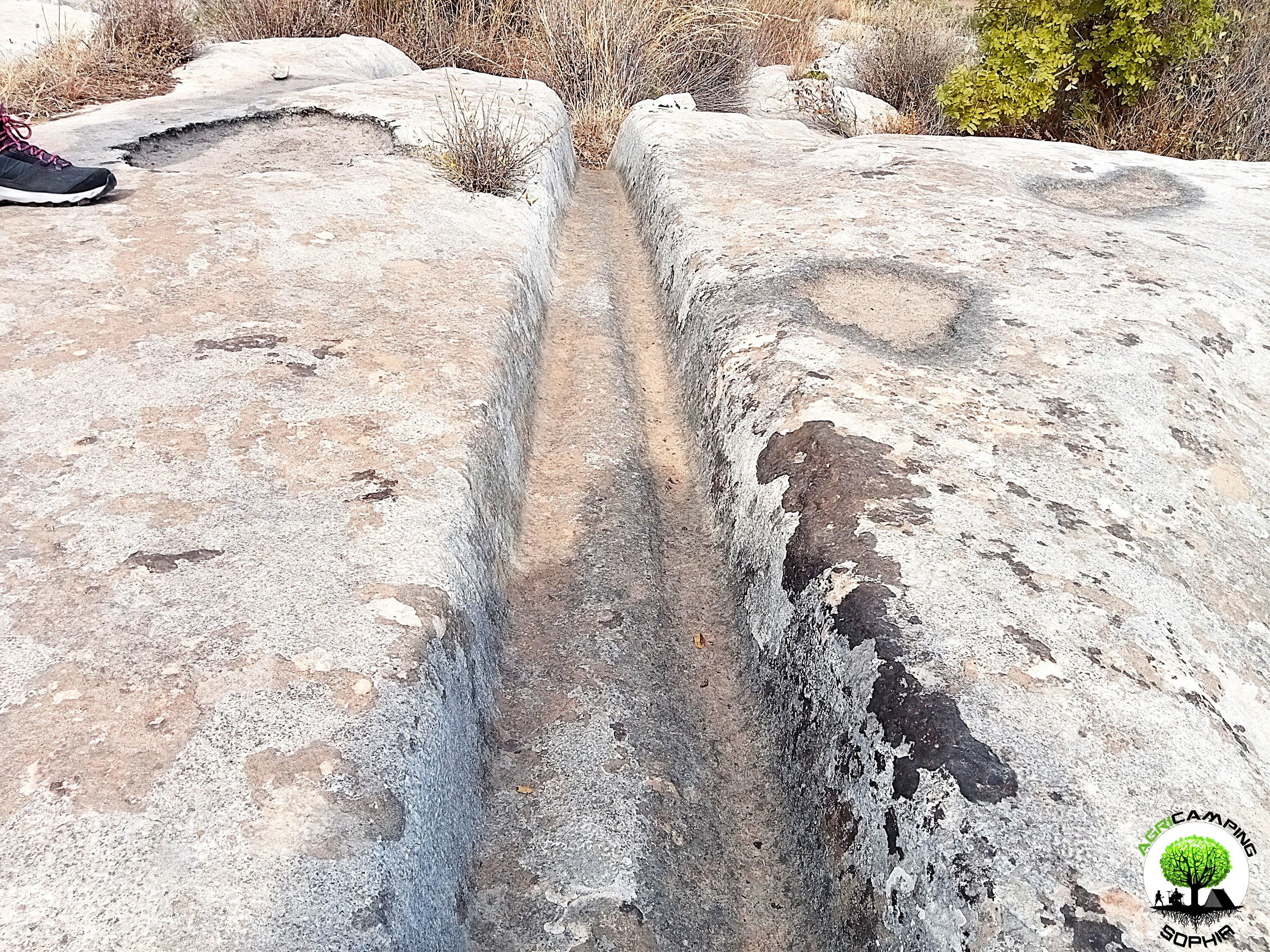 THE POLISHING OF THE CART RUTS
THE POLISHING OF THE CART RUTS
Read also THE PROBLEMATIC EDGES OF THE CART RUTS
I will skip any preamble, referring to to what has already been written regarding the presence of cart ruts in south-eastern Sicily.
To proceed with this comparison I have chosen a probable capital and the corner of a recess present in a block of the northern walls of Eloro that would seem to resemble a pinax, that is, a niche that would have housed a fresco of the heroa, but which a more careful observation refers to a system functional to the grip of the block through a pincer winch. Both elements, like the curt ruts, have remained at the mercy of the elements for millennia, and are therefore subject to comparable wear and tear due to the passage of time. The finishing of the capital should be of a high standard, since it is an architectural element that also has an aesthetic function. The recess, on the other hand, should have...
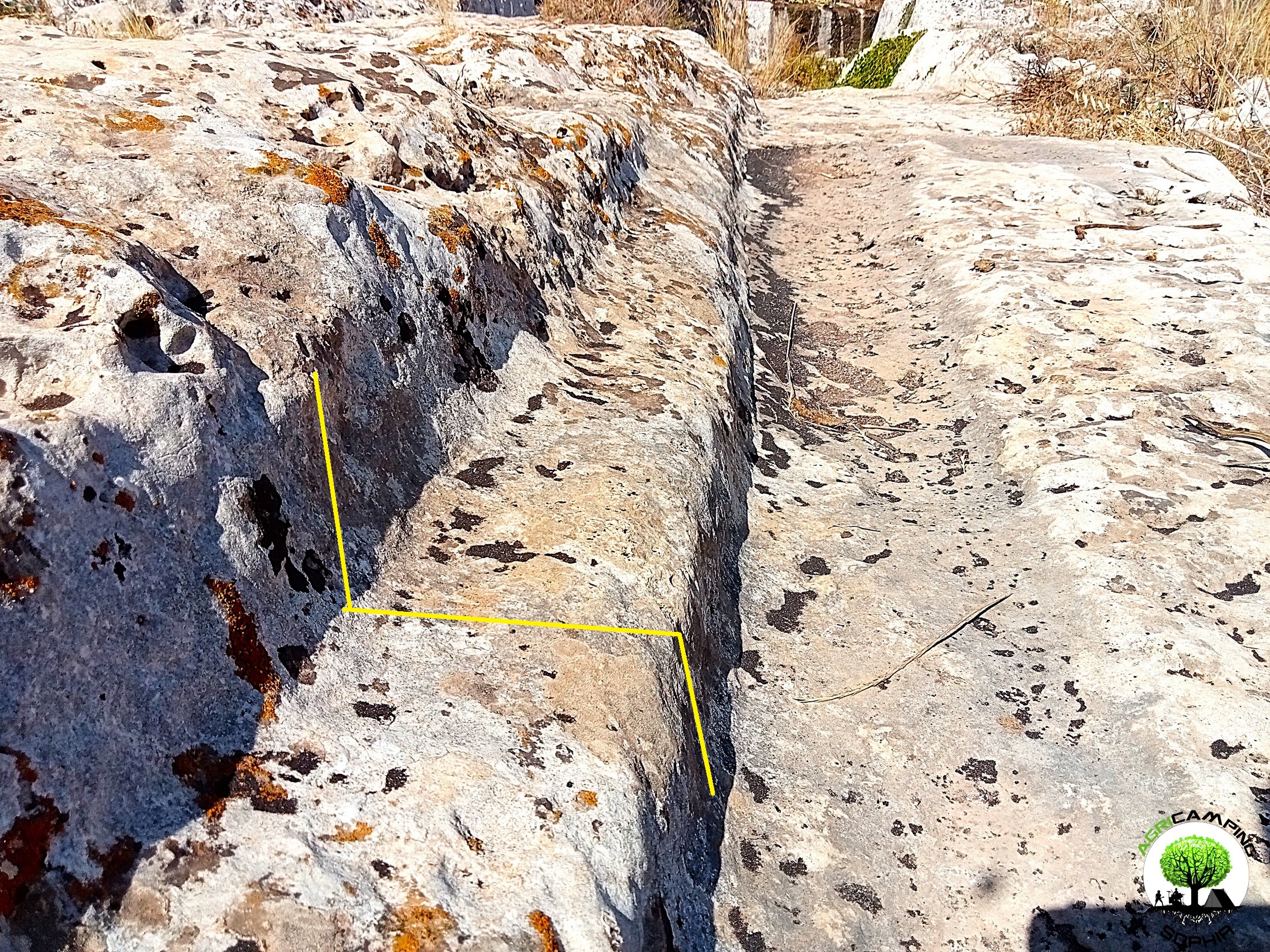 THE PROBLEMATIC EDGES OF THE CART RUTS
THE PROBLEMATIC EDGES OF THE CART RUTS
I will skip any preamble, referring to to what has already been written regarding the presence of cart ruts in south-eastern Sicily.As can be seen in other sites around the world, in some cart ruts I visited, in particular in the Cugni district in Pachino, in the Granati Vecchi district in Rosolini and in the Targia district in Syracuse, a clear border can be seen, a sort of frame, next to the grooves, more marked externally, barely noticeable internally.
The borders I measured have a width of 14-20 centimeters and a height of 8-10 centimeters.
Not all cart ruts have such frames present or particularly evident, regardless of the degree of wear or degradation. They are found above all in cart ruts with less deep grooves.
As already described in detail, given the presence of furrows with a depth of even 65-70 centimeters, the wheels of a possible vehicle would have had to have a...
 THE PROBLEM OF CART RUTS IN SOUTH-EASTERN SICILY (PART FOUR)
THE PROBLEM OF CART RUTS IN SOUTH-EASTERN SICILY (PART FOUR)
Click here to return to third part
Clapham Junction
As in the Maltese site Misrah Ghar Il-Kbir, also in the Targia and Granatari Vecchi districts the cart ruts intersect and cross each other in a similar way to the track switches in a railway station. The nickname Clapham Junction that was given by David H. Trump to the Maltese site, derives precisely from the similarity with the famous English railway station. For Sagona these are agricultural furrows and water channels, for Mottershead, Pearson and Schaefer these are abandoned paths due to obstacles and wear. Obviously we do not know what the morphology of the Syracuse and Rosolini territory was at times when the cart ruts were traced, but considering the current context, there certainly would have been no agricultural reason to build them, given the presence of fertile land, springs and fresh water courses just a few kilometers...






 DO YOU WANT TO ORGANIZE AN ERASMUS AT AGRICAMPING SOPHIA?
DO YOU WANT TO ORGANIZE AN ERASMUS AT AGRICAMPING SOPHIA? CART RUTS MODELED ON SOFT ROCK?
CART RUTS MODELED ON SOFT ROCK? RACK OR HOUSING FOR CLOGS?
RACK OR HOUSING FOR CLOGS? CART RUTS CUT FROM QUARRIES
CART RUTS CUT FROM QUARRIES CART RUTS AND A FEW TOO MANY PROJECTIONS
CART RUTS AND A FEW TOO MANY PROJECTIONS THE POLISHING OF THE CART RUTS
THE POLISHING OF THE CART RUTS THE PROBLEMATIC EDGES OF THE CART RUTS
THE PROBLEMATIC EDGES OF THE CART RUTS THE PROBLEM OF CART RUTS IN SOUTH-EASTERN SICILY (PART FOUR)
THE PROBLEM OF CART RUTS IN SOUTH-EASTERN SICILY (PART FOUR)